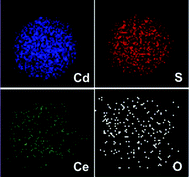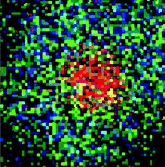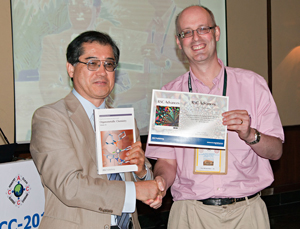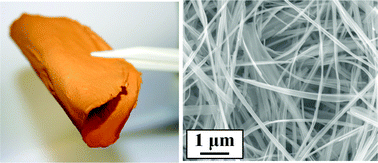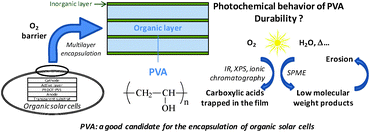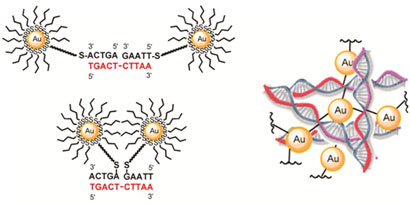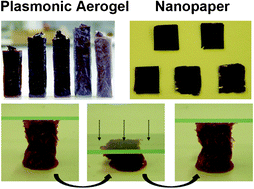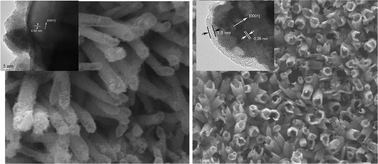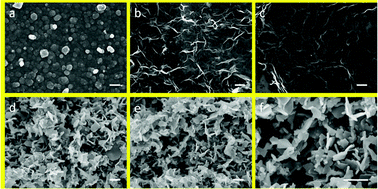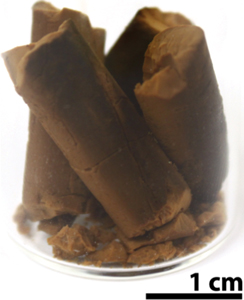
Picture of Cg-7C chalcogels in a glass vial. This is the typical appearance of C-cast gels following supercritical drying.
“Chalcogen-based aerogels could be used to capture and immobilize radioactive iodine”, say scientists in the US.
In order to maximize the efficiency of nuclear power production, fuel reprocessing will be required. Although the most efficient and final methods of reprocessing have not yet been identified, the current proposed methods will involve measureable quantities of long-lived radioactive species such as 129I and 99Tc. These radioisotopes have long half-lives (hundreds-of-thousands to millions of years) and are usually immobilised in glass and safely disposed of in geological repositories. Here, the authors investigate the option of using chalcogen-based aerogels (a.k.a. chalcogels) as sorbents to capture radioactive iodine gas from the off-gas at a future reprocessing facility.
The chalcogels discussed in this work are aerogels assembled with Ge-S structural units and an additional interlinking metal. The team led by Brian Riley at the Pacific Northwest National Laboratory, Richland, USA, provides some understanding of the chemical and thermal stability of the chalcogel-sorbed iodine phases. “High affinity was obtained with the Pt-Ge-S chalcogels, both under a saturated iodine environment and gas containing low I2(g) concentrations,” says Riley and co-workers. The maximum iodine loading was shown to be about 240 mass% and over 99% of the available iodine gas was removed from flowing dry air containing I2(g) at 4.2 ppm.
They conclude that “improvements to the chalcogels are needed to lower cost, provide a strong iodine chemisorption, and prevent desorption during consolidation”. The authors also give a brief overview of the application of chalcogels as a waste form for radioisotopes. This article provides some insight into how these materials could be consolidated into a chalcogenide glass as a final waste form product. Chalcogenide glasses have a well-known high-iodine solubility.
“This work is on-going and involves collaboration with Mercouri Kanatzidis at Northwestern University,” adds Riley.
Read the full article for free until December 2012:
Chalcogen-based aerogels as a multifunctional platform for remediation of radioactive iodine
Brian J. Riley, Jaehun Chun, Joseph V. Ryan, Josef Matyáš, Xiaohong S. Li, Dean W. Matson, Shanmugavelayutham K. Sundaram, Denis M. Strachan and John D. Vienna
RSC Adv., 2011, Advance Article, DOI: 10.1039/C1RA00351H, Paper

Change in the appearance of P-cast Pt-Ge-S gel (Cg-3P) during the gelation process over the course of 144 h (in the hydrogel state)













